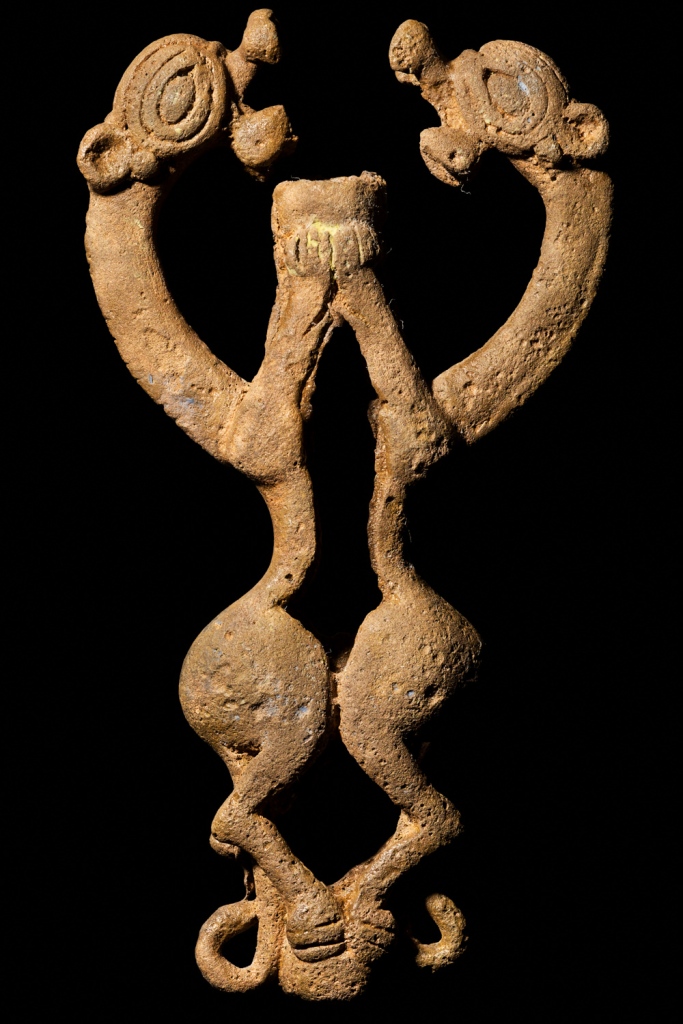Goldis Gorji

Photography by Julia Thorne / Tetisheri
A finial outlines a figure with two snakes rising from its shoulders, to most people of Persian heritage, this silhouette would be familiar: Zahaak. The story of Zahaak originates from the “Shahnameh”, a renowned book written by the poet Ferdowsi, which preserves the myths, history, and language of the Persian culture. Zahaak’s story presents what man can be subjected to as a result of the lethal combination of naiveté and manipulation. My poem is written from the perspective of Zahaak, who was tricked by an evil spirit that disguised itself as the palace chef and kissed Zahaak’s shoulders, as a sign of respect, but this was a façade for anarchy and turmoil, and two poisonous snakes grew in the place of his kisses. The snakes could not be removed. Surgically severing them would only result in them being replaced. The evil spirit then returned in the form of a physician and instructed Zahaak that the only way that these snakes wouldn’t cause him harm was if they were fed daily with a stew made from two human brains. Thus, as the snakes grew, so did the villainous character within Zahaak. Zahaak was ultimately hunted by Fereydoun, who struck him with an ox-headed mace but didn’t kill him; instead he was imprisoned in a cavern at the Mountains of Damavand, where he will remain until the end of the world.
In my poem, Zahaak refers to “two alternate universes”, which alludes to the fact that this finial was purchased by the museum from “Mr. Smith” in 1964 who took the finial from Luristan in Iran. Since then, this finial has been stored in the darkness of temperature-controlled storage units and hence has not been displayed. The fury and distaste that Zahaak expresses towards the “white people” is triggered from the fact that despite not knowing his story, they also subjected him to a parallel fate as his home country.
The poem evokes a sense of sympathy within the reader, at the anguish threaded within Zahaak’s words, which juxtapose with the nature of his character and the evil associated with his name and story. This complexity is what I set out to embody, in an attempt to pay homage to the masterpiece that is the Shahnameh and the theme of the potency of good versus evil.
Goldis Gorji
Alas, a villain was paralyzed into a numb abyss,
“The lasting fate of Zahaak” by Goldis Gorji
I have lived out my destiny now in two alternate universes,
One more melancholic than the other
The natural consequence of being uprooted
Removed of substance and muchness
I crave the fear, the reputation.
He, who I refuse to name, to prevent him any more notoriety and fame,
Dragged me overseas, for the white people to please
Yet they don’t value the myth, the legend, the vigour
To their uncultured eyes, I am but a bronzed jewel
And so the snakes that were once upon my shoulders have since shed their skin
and transformed into worms
I would rather live subdued by the anxiety of Fereydoun than in archives
I would rather die 1000 deaths than to be subjected to this nothingness
Oh by the kisses that were planted upon my shoulders
And oh by the snakes that grew
Oh by the decisions that were made
And oh by the terrain that led me to you
Oh by the fate of Zahaak at the hands of Fereydoun or Mr Smith,
Even the mountains of Damavand cannot satisfy me from this blue